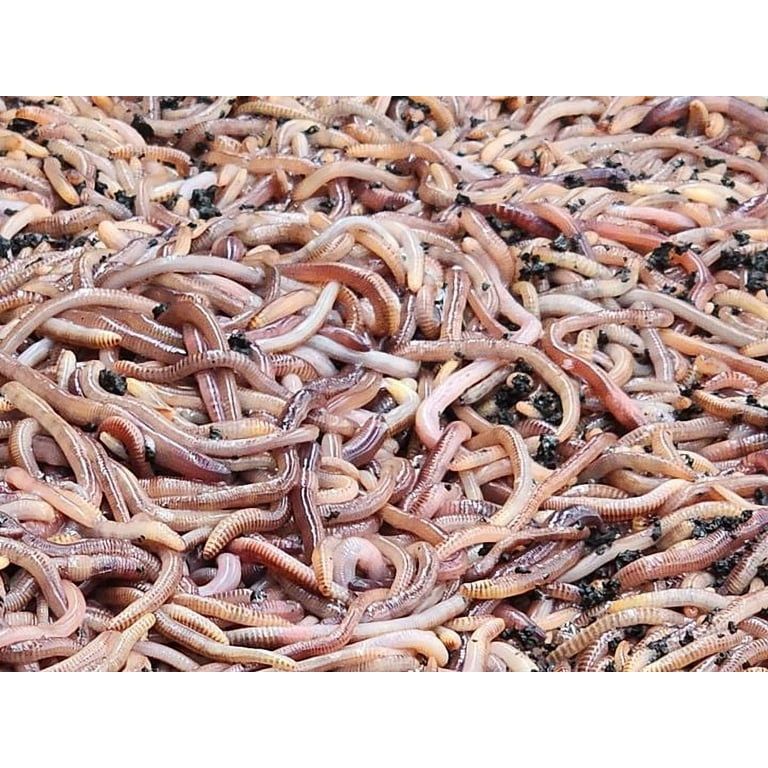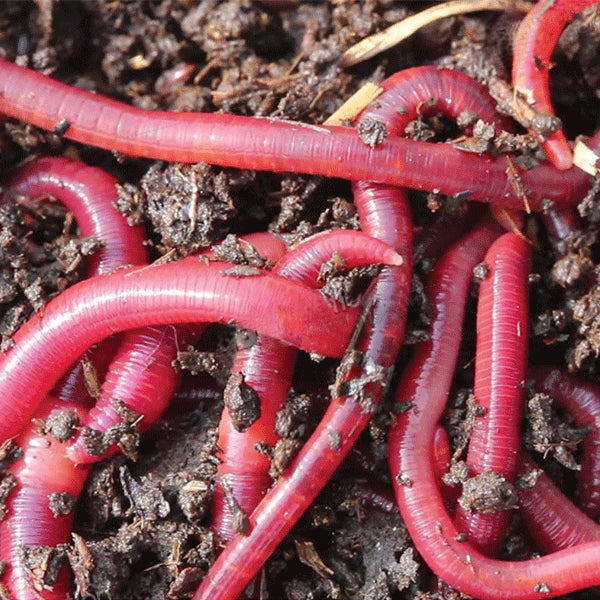Red wigglers: Best methods to keep them
Red wigglers: Best methods to keep them
Blog Article
The Duty of Red Wigglers in Lasting Horticulture
The integration of red wigglers right into lasting gardening practices supplies an engaging technique to enhancing dirt wellness and minimizing organic waste. The effects of using red wigglers extend past simple composting; their role in forming an extra sustainable future warrants a much deeper exploration of their advantages and functional applications.
Comprehending Red Wigglers
Red wigglers, scientifically called Eisenia fetida, are a species of earthworm renowned for their duty in sustainable horticulture and composting methods - red wigglers. These worms thrive in decaying organic issue, making them especially effective in transforming kitchen scraps and backyard waste into nutrient-rich garden compost. Unlike traditional earthworms, red wigglers have a greater resistance for varying dampness levels and can prosper in environments with bountiful organic material
(NC Worm Farms)Classically, red wigglers are smaller sized than their earthworm equivalents, normally determining between 3 to 4 inches in length. They possess a reddish-brown pigmentation and have a fractional body framework that helps in their burrowing and feeding activities. These microorganisms are hermaphroditic, suggesting each specific possesses both male and female reproductive body organs, which enables effective population development under optimum conditions.
The habitat choices of red wigglers include moist, dark settings abundant in organic content, such as garden compost bins or worm farms. Their eco-friendly duty expands beyond composting; they are integral in aerating the dirt and assisting in nutrition cycling, which inevitably adds to healthier yard environments. red wigglers. Understanding the biology and actions of red wigglers is necessary for those seeking to apply efficient vermicomposting in sustainable horticulture
Benefits of Vermicomposting
Vermicomposting offers numerous benefits that enhance sustainable horticulture methods and add to environmental wellness. One of the key benefits is the improvement of organic waste into nutrient-rich garden compost, which improves dirt framework and fertility. The castings generated by red wigglers are packed with helpful microorganisms and necessary nutrients, making them an excellent natural plant food.
Additionally, vermicomposting dramatically reduces garbage dump waste. By drawing away kitchen scraps and lawn waste from garbage dumps, this technique not only reduces methane exhausts-- a powerful greenhouse gas-- but likewise advertises a round economy, where waste is repurposed as a resource.
One more benefit is the improvement of dirt oygenation and drainage (red wigglers). The burrowing activity of red wigglers creates channels in the soil, enabling air and water to pass through even more conveniently, thus fostering a healthier root system for plants
Additionally, vermicomposting can be done on a tiny range, making it accessible for urban gardeners and those with limited space. This method encourages environmental stewardship and awareness, as individuals become more engaged with their waste management practices. Ultimately, vermicomposting represents a lasting, reliable, and eco-friendly approach to gardening that profits both plants and the planet.
How to Start Vermicomposting
Starting your very own vermicomposting system can be a fulfilling undertaking that improves your sustainable gardening techniques. To start, choose a suitable container, such as a plastic bin or wood box, with great drain and ventilation. The dimension will certainly depend upon the volume of cooking area scraps you create; a bin of 10-14 gallons generally is adequate for a family.
Following, prepare the bedding product. Shredded newspaper, cardboard, and coconut coir are excellent choices, giving a comfortable environment for the red wigglers. Purpose for a bed linens deepness of concerning 4-6 inches, which ought to be moist however not soaked.
As soon as the bedding is established, present your worms. Red wigglers (Eisenia fetida) are one of the most suitable for composting. Begin with roughly one extra pound of worms for every single 2-3 extra pounds of kitchen area scraps weekly.
Begin adding kitchen waste, avoiding meat, dairy products, and oily foods, as these can attract parasites and produce smells. Consistently keep track of the bin's dampness degrees and temperature level, guaranteeing it remains within the suitable array for worm activity. With these first steps, you'll be well on your method to creating nutrient-rich compost for your yard.
Maintaining a Healthy And Balanced Worm Container
A growing worm bin needs consistent care and interest to preserve an ideal environment for the red wigglers. Key elements to keep track of include dampness degrees, temperature, and food supply. Preserving a moisture level similar to a wrung-out sponge is crucial; excessive water can cause anaerobic problems, while inadequate can dry out the worms.
Temperature level is additionally vital, as red wigglers prosper in a series of 55 to 77 levels Fahrenheit. Extreme temperature levels can emphasize the worms, potentially causing death. Putting the container in a climate-controlled location or using insulating materials can aid manage temperature level variations.

Last but not least, oygenation is important. Consistently turning the bedding and using a fork or shovel can prevent compaction and advertise air flow, making sure a healthy and balanced, growing setting for the red wigglers. By adhering to these techniques, garden enthusiasts can preserve an effective worm bin that sustains lasting horticulture efforts.
Influence On Dirt Health And Wellness
Enhancing dirt health and wellness via using red wigglers is a basic element of lasting horticulture. These worms, understood medically as Eisenia fetida, play a critical function in boosting soil structure and fertility. By eating raw material, red wigglers damage down complicated products right into easier substances, a procedure referred to as vermicomposting. The end product, worm castings, is rich in vital nutrients, including nitrogen, phosphorus, and potassium, which are crucial for plant development.

(eisenia fetida worms for sale)Research studies have actually revealed that soils improved with worm spreadings show increased microbial activity and enhanced fertility, resulting in greater crop returns. By incorporating red wigglers right into horticulture methods, garden enthusiasts not just improve their soil however likewise add to an extra lasting farming system, stressing the interconnectedness of soil health and environmental stewardship.

Verdict
In conclusion, red wigglers significantly add to sustainable gardening with their efficient vermicomposting practices. Their capacity to convert natural waste right into nutrient-rich compost boosts dirt fertility and sustains a varied microbial ecosystem. Their burrowing task boosts dirt oygenation and read this water retention, benefiting plant health and wellness. By advertising waste decrease and cultivating a circular economic climate, red wigglers become important elements in environmentally friendly horticulture efforts, highlighting their vital function in environmental sustainability.
Report this page